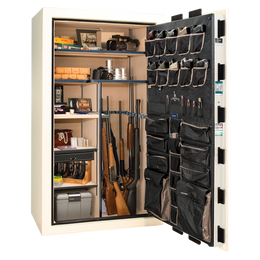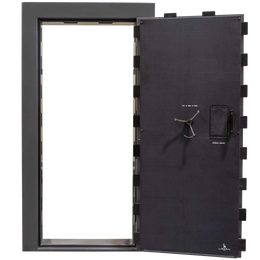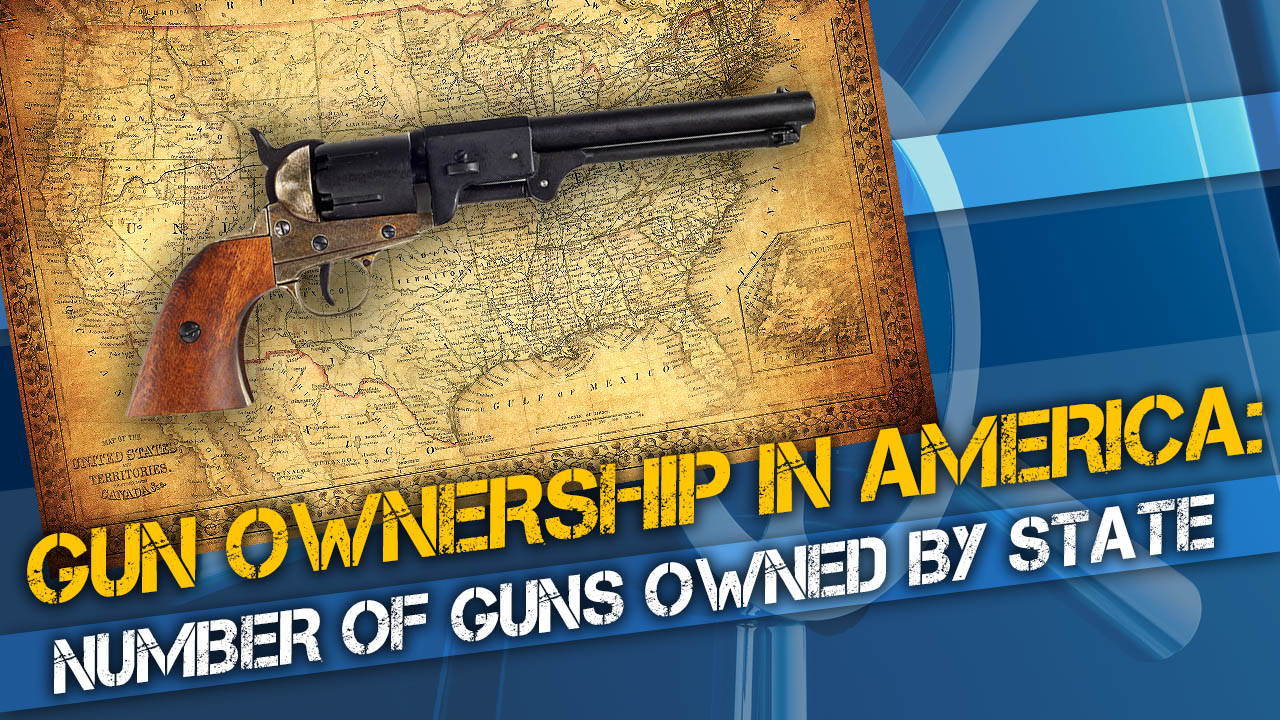Whether you’re a long-time hunter, “used to hunt” and want to get back into it, or are a first-timer, finding the best places to hunt is part of the sport. It’s easiest to look into potential hunting locations around your local area, but for many people in the US, this can be a tall order.
Some areas are so thoroughly populated that open hunting land is pretty much gone. In other areas, prime hunting spots have been bought by private owners or posted for use by land lessees only. And of course, if you do have access to public hunting land, it may be pretty crowded, which can impact your enjoyment and hunting success.
So, if you’re considering traveling to hunt, or if you’re lucky enough to live close to these locations, let’s look at what we think are among the 5 best places for hunting in the USA, and discuss some options for you to consider.
Please note: this article is intended for entertainment and informational purposes only and any game regulations mentioned are not exhaustive, nor do we assume any liability for inaccuracies of any information. Be sure to check each state’s current laws before booking a trip or buying a hunting permit, and follow all local laws and regulations.
Alaska: The Last Frontier
For truly big game, Alaska is a treasure trove for America’s hunters. Grizzly bear, black bear, Sitka black-tailed deer, Alaska-Yukon moose, caribou, muskox, bison, and various mountain sheep and goat species are all on the hunting menu, plus wolves, wolverines, various small game, and of course the incredible salmon and halibut fishing (but that’s a story for another time).
The different kinds of Alaskan big game and where to find them
Brown/grizzly bears are found throughout Alaska except on the islands south of Frederick Sound in southeastern Alaska, the islands west of Unimak in the Aleutian Chain, and the islands of the Bering Sea. The monster-huge Kodiak brown bear, sometimes called the Alaskan brown bear, inhabits the islands of the Kodiak Archipelago in southwest Alaska, and is one of the two largest bear species in the world, the other being the polar bear.
Black bear are found in the majority of the interior of the state and southern coastal areas, but not along the western coasts and islands (where brown bear dominate).
Moose range all over Alaska, but are especially abundant on timberline plateaus, along the major rivers of south-central and interior Alaska, and in recently burned areas that have generated dense stands of willow, aspen, and birch shrubs.
The black-tailed Sitka deer is native to the coastal rainforests of southeast Alaska and the range has been expanded to include populations near Yakutat, in Prince William Sound, and on Kodiak and Afognak Islands. Mule deer and white-tailed deer, though not native to Alaska, have migrated into the eastern portion of the state via Canada, and mule deer are now legal to hunt in certain areas (year-round, and without a bag limit; see below).
Alaska hunting laws to keep in mind
Alaska has large areas of public land that are open to hunting, managed by the state and federal governments. Most national parks are closed to hunting, although national preserve areas may be hunted.
You will need to purchase non-resident permits (assuming you’re traveling to Alaska and don’t already live there) and they can be pretty pricey, ranging from $60 for a wolf permit up to $2,200 for muskox. Deer tags are $300, black bear $450, elk and goat $600, caribou $650, moose $800, bison $900, and brown/grizzly bear $1,000. This is not an insubstantial amount of money, but as they say, everything is more expensive in Alaska.
And don’t forget to factor in the price of an outfitter or guide, if that’s your bag. However, for the free spirits out there, Alaska allows non-resident hunting of black bear and moose (and many other species, other than brown/grizzly bear, Dall sheep, or mountain goat) without a guide. Check the local regulations to confirm before booking your hunting trip, though.
All nonresidents hunting big game species that require an Alaska-licensed guide should check to see if their hunt requires a guide-client contract in place before or at the time of applying for draw hunts.
NOTE: nonresident aliens (i.e., non-US citizens) must be personally accompanied by an Alaska-licensed guide to hunt ANY big game animal in Alaska, including black bear, brown/grizzly bear, bison, caribou, Dall sheep, deer, elk, moose, mountain goat, muskox, wolf and wolverine.
Also be aware that in many regions of Alaska, bag limits affect the next several years of hunting. After a bear is taken, you may need to wait between one and four years to hunt bear in Alaska again.
Hunters may not take any bear cubs or sows with cubs. You are required to salvage both the hide (with claws and evidence of sex naturally attached) and skull of a grizzly bear killed anywhere in Alaska (for non-resident hunters).
And in case you’re wondering, no, you can’t hunt polar bears in Alaska, unless you’re classified as part of the Alaska native population, and only if the activity is not wasteful and the polar bear population remains healthy.
A note on travel to and from Alaska for hunting: If you happen to want to drive through Canada to get to Alaska and want to take your hunting guns with you, we recommend you think twice. Canada border agents are notoriously finicky about firearms, even if you follow all the rules. It’s best to fly to Alaska (follow all TSA and airline regulations about transporting firearms and ammunition legally) or even ship your guns to your guide (or to yourself) where legal.
Best time of year for hunting in Alaska
The best time of year for hunting will obviously be determined primarily by the species you’re going after and the legal hunting season for non-residents. While some species such as the mule deer mentioned above are legal to take year-round, for most big game there’s a specified hunting season.
Hunting moose is generally allowed for non-residents for about a 2-week period in early September, but be sure to check with the Alaska fish and game department and/or your outfitter prior to booking travel and purchasing permits.
Black bear are generally allowed to be hunted most of the year, from Sept 1- June 30, but be sure to check regulations. Brown/grizzly bear season is generally from September through December, but brown bear hunting seasons are held in both spring and fall in some areas but only in fall in other areas, so be sure to check with the Alaska department of fish and game and/or your guide (remember, you need an Alaska-licensed guide to hunt grizzlies).
Interestingly, per the Alaska department of fish and game, “Mule deer can be harvested in Alaska year-round. In response to a desire to learn more about mule and white-tailed deer entering Alaska, the Board of Game made it possible for hunters to harvest those deer in Units 1, 5, 11–13, 20 and 25. In the aforementioned units there is no closed season and no bag limit.”
Deer, elk, and caribou season in Alaska is generally August through December, but of course the later you go, the colder and darker it gets, so plan accordingly.
Muskox hunting season is divided into two time periods: a fall hunt that runs from September 1 - 30 and a winter/spring hunt which occurs Feb 1 - March 15. Per the AK DFG, “The fall hunt can be wet and windy… The winter/spring hunt can be cold with wind and blowing snow. You should be prepared for inclement weather in either season.”
This is generally good advice for anyone hunting anything in Alaska, at any time.
Arizona: The Sunshine State
Arizona boasts a wide array of larger game for hunters, many small game species (band-tailed pigeon, dusky grouse, cottontail rabbit, dove, pheasant, quail, sandhill crane, tree squirrel, chukar), and (perhaps surprisingly for such an arid state), 15 species of waterfowl. The heat can be truly punishing in the summer months, but in the fall and winter, Arizona might just be the perfect place to hunt.
The different kinds of big game and where to find them in Arizona
Arizona’s big game lineup includes pronghorn (often called “antelope”), black bear, bison, bighorn sheep, elk, javelina, turkey, mountain lion, mule deer, and white-tailed deer. You can also draw for mountain lion permits.
Arizona’s desert bighorn sheep live primarily in the south and western portion of the state, near steep slopes in mountain ranges and rocky cliffs above foothills. One of the most populous habitats is in the Black Mountains near Kingman. Also, the Havasu wilderness area, which spans for 30 miles along the Colorado River north of Lake Havasu City, is home to many bighorn sheep, game birds, coyotes, porcupines, and bobcats.
Mule deer are found in the National Forests that cut across Arizona’s north-central and eastern country, from Grand Canyon National Park in the north/central to Apache National Forest in the southeast. But the real monsters are found in what’s known as the “Arizona Strip” (Units 13A and 13B) in the northwest corner of the state. Some of the largest mulies ever harvested have come from this area, and the gene pool is one of the best, if not the best in the world.
Bear in Arizona? You’re dang right. Turns out Arizona is second only to Colorado in producing Boone & Crockett-record sized black bear (in the lower 48 western states; Alaska has more record black bears taken, and surprisingly, Wisconsin doubles or even triples every other top-20 state’s numbers). AZ bear country is pretty much the swath of national forests from the bottom of the Grand Canyon down-east to Apache National Forest. There are both fall and spring black bear hunts, and archery or any-legal-weapon hunts, but most areas may close early based on sow quotas, so be sure to check with AZ game and fish.
Elk range in similar parts of Arizona to the black bear, in that diagonal swath across the north/central/eastern part of the state, with Flagstaff right in the heart of it.
Arizona’s pronghorn (what many western folks call “antelope”) are found primarily in the northern plains (similar to the elk’s range but extending further north and west). They also inhabit high-elevation meadows between forested areas, semi-desert grasslands, and scattered herds are found in the grasslands of southeastern Arizona.
Arizona hunting laws to keep in mind
We mentioned that black bear sow quotas can shut down certain units for the year, so keep an eye on that if you’re after one of the “bears in the pears” (where bears move to lower elevations to feast on prickly pear cactus fruit).
Otherwise, Arizona’s hunting laws and regulations are pretty extensive, and too much to go into here without boring people to death. You can check any particular regulation or hunting rules for Arizona before booking your hunting trip by checking the AZ department of game and fish’s site here.
Best time of year for hunting in Arizona
Much like Alaska, Arizona is a land of weather extremes, but kind of in the reverse. Whereas in Alaska you have a very real chance of freezing to death or dying from exposure to the cold if you’re unprepared, in Arizona, you can quickly become dehydrated or sickened from heatstroke if you venture out during the summer (or early fall, really) without a lot of water and good protection from the sun.
The typical big game hunts for elk and deer fall in August through December (depending on weapon and tag) like most places, but there is a January archery deer hunt, as well as spring hunts for black bear (as noted above), turkey, javelina, and bison.
Also, keep in mind that non-resident permits and tags can be spendy. For non-AZ residents, deer permits or OTC (over-the-counter) tags start around $300, pronghorn around $565, elk at $600, bighorn sheep $1800, and a bison bull tag is a whopping $5400. So if you’re spending that much, you may also want to budget for a guide to help make sure you get your money’s worth.
Colorado: The Centennial State
With more than 23 million acres of public land, and featuring the heart of the Rocky Mountains, Colorado is a hunter’s paradise. The state boasts a diverse array of big and small game, as well as a surprisingly successful waterfowl season that goes from the beginning of teal season in September all the way through spring snow goose season.
The different kinds of Colorado’s game and where to find them
The Centennial State features excellent deer hunting (mule and white-tailed), as well as elk, moose, Rocky Mountain, and Desert bighorn sheep, mountain goat, pronghorn, black bear, and cougar/mountain lion. You can hunt buffalo/bison in Colorado, but the state doesn’t issue any permits (yet), so you’ll need to hunt bison on private land (there are several options if you want to go this route).
Colorado also features a wide variety of small game hunting, for such species as Albert’s squirrel, fox, rabbit, hare, badger, marmot, coyote, mink, and upland game birds including chukar partridge, prairie chicken, dusky/sage/sharp-tailed grouse, dove, pheasant, quail, and ptarmigan.
Colorado’s moose population has grown and now approaches 3,000 animals statewide, and limited hunting is offered in North Park, Middle Park, and the Laramie River areas.
Black bear range in suitable habitats (lots of available food, water, and cover) in the western two-thirds of the state. Highest black bear population densities occur in the montane shrublands from Walsenburg and Trinidad west to the San Luis Valley, in the San Juan Mountains, and in the west-central canyon country.
Elk can be found throughout the western half of the state, but the northwest corner (Units 1 and 201) is where the monster Boone & Crockett record bulls are typically found.
For deer, Middle Park, State Bridge, and Unit 44 historically have produced lots of trophy bucks. Units 41, 42, and 421 should be good as well. Check Colorado’s hunting unit map here.
Pronghorn are found primarily in the flatlands of northwest and eastern Colorado. Small herds are also found in North Park, Middle Park, South Park, and the San Luis Valley.
Desert bighorn sheep are found along the western Colorado border, while Rocky Mountain bighorn are typically found near the tops of, yep, you guessed it, the Rocky Mountain peaks, along with the mountain goats. Lots of tourists and outdoor-type resident activity have recently pushed bighorns out of their typical habitat and into the higher, more remote areas, so keep in mind that if you have your heart set on a Rocky Mountain ram, you’re going to be in for a difficult, steep hunt. Arranging a local guide (and a lot of cardio) is recommended before you go.
Colorado hunting laws to keep in mind
Of particular note if you’re not from Colorado and want to go after a desert bighorn: for 2022 there will only be a single non-resident desert bighorn sheep permit, so check Colorado’s Parks and Wildlife site to see how you can throw your hat into the ring and try to draw that golden ticket. However, you must choose between applying for rocky mountain or desert bighorn sheep, as you can’t do both.
There are some particular regulations that you should be aware of in Colorado, such as, “Public lands west of I-25 are closed to collection from January 1 through April 30, annually. On public lands west of I-25, any person may collect shed antlers or horns from May 1 through December 31, annually, except in GMUs 54, 55, 66, 67, and 551 where the collection of shed antlers or horns shall further be prohibited between legal sunset and 10:00 AM from May 1 through May 15 annually.”
You may not think that collecting shed antlers would be prohibited, but it is in certain areas at certain times, as you can see. As for general hunting regulations, it’s more reasonable to direct you to Colorado’s Parks & Wildlife hunting regulations page.
Best time of year for hunting in Colorado
Obviously, the best time to hunt your desired game in Colorado is during the legal hunting season for your game, which is generally the fall months (September through December, depending on whether you choose archery, rifle, or muzzleloader) for things like deer and elk. Colorado breaks up bear hunting season into at least 4 separate hunts, occurring in roughly 1- to 3-week periods between the beginning of September and the end of November.
Like many states, Colorado has a spring turkey hunt in April and May but also has a fall and “late season” turkey hunt until mid-January.
Non-resident moose tags are $2300+ and the moose season in Colorado is generally the first two weeks of October.
Waterfowlers have from September through April to potentially hunt, but the flyways and open seasons vary, depending on the type of birds you’re after, so be sure to check for the current seasons at Colorado’s Parks and Wildlife page.
Depending on the game you’re after, the weather can be a real factor in the Colorado Rockies. The base elevation is about 5,000 feet and the state has at least eleven peaks over 14,000 feet, so do as your momma told you and “dress warmly.”
Texas: America’s Safariland
Have you ever wanted to go on safari but don’t want to leave the USA and spend 80 grand? Well, we have great news for you, friend. In Texas, you can hunt an astonishing variety of native and non-native big game animals that will make you feel like you’re in the savannah of Kenya.
The different kinds of Texas game and where to find them
The major native game animals in Texas are white-tailed deer, mule deer, desert bighorn sheep, pronghorn antelope, gray or cat squirrel, red or fox squirrel, collared peccary or javelina, and alligators (yep, we said alligators; head to east Texas to earn your ‘gator boots).
Native white-tailed deer grow biggest in the south Texas plains, basically from San Antonio south to the “tip.” This is also where the most epic Texas dove hunting is found.
Texas’s highest alligator populations occur along the eastern portion of the Gulf Coast between Houston and the Louisiana border. However, a respectable number of gators live in the coastal prairies down towards Corpus Christi, as well as scattered locations throughout east Texas where there are lots of rivers.
However, the real story about hunting big game in Texas for many people has to do with African game that has been transplanted by Texas ranches to either supplement their cattle production or lure in hunters from around the world.
Texas ranch owners first saw the potential for raising African game animals in the 1920s, and by the 80s there were 51 exotic African species in Texas. Today there are over 125!
Exotic African/Texas big game include blackbuck antelope, bongo, blesbok, gemsbok, wildebeest, axis deer (now considered an invasive species in Texas), fallow deer, sika deer, mouflon sheep, Corsican sheep, aoudad sheep, elk, addax, lechwe, scimitar-horned oryx, Beisa oryx, white-bearded gnu, impala, kudu, nyala, springbok, zebra, and eland, among many more.
Some, like the aoudad, were originally imported by zoos, and later set loose by private owners and public officials, to try to populate areas where native bighorns had struggled to survive. This has been controversial since the aoudad is now nearly a “pest” species and has taken over much of the native bighorn’s territory.
There are suitable “safari” hunting properties spread all over Texas, but you’ll find the majority in the central/east half of the state.
Texas hunting laws to keep in mind
More than 95% of the land in Texas is privately owned or managed so understanding Texas hunting laws is important. Non-residents need to get permission from the landowner to hunt as a guest or pay the landowner to hunt on that land.
A hunting license is required of any person, regardless of age, who hunts any animal, bird, frog, or turtle in Texas (except furbearers, if the hunter possesses a trapper's license). No license is required for nuisance fur-bearing animals, depredating hogs, or coyotes.
There is no legal closed season on exotic safari-type hunting in Texas and dates with the various ranches/hunting properties are available year-round. Almost all Texas safaris offer a payment structure based on trophy fees; if you don’t get your kill, you don’t pay, other than the standard fees covering things like food, lodging, guide services and, airport transportation.
Best time of year for hunting in Texas
For practical purposes, you’ll generally want to avoid Texas mid-summer unless you like things hot. Some areas of this large state get cripplingly humid as well. The typical fall/winter hunts for game like white-tailed deer fall during November and December (a little later than in some other states), with mule deer season opening around the 3rd week of November (though the archery hunts, where legal, begin in early October).
Alligator season is generally the second half of September, or the months of April through June, depending on whether you’re a “core” or “non-core” hunter. (See Texas’s Parks and Wildlife pages for details.)
Dove season starts September 1 and goes to early November, but then there’s a second season from mid-December through mid-January, depending on the area you’re hunting.
For feral hog hunting, one of Texas’s most-fun hunting experiences for many people, you can visit whenever the landowners allow, and if you’re lucky, they might even pay you to shoot these highly destructive, invasive (and potentially tasty) animals.
Wisconsin: A Treasure Trove of White-tails and Black Bears
Many deer hunters are aware that Wisconsin is one of the best places in North America to hunt white-tailed deer. Traditionally, some truly monster bucks have come out of Wisconsin’s woods. However, what many people don’t know is that Wisconsin is also the Boone & Crockett record black bear capital of the United States. By a LOT. (In fact, Glidden, WI has named itself the “black bear capital of the world.)
The different kinds of Wisconsin game and where to find them
In addition to the genetic-freak-huge bears and bucks in cheesehead country, you can also hunt elk, wolf, bobcat, fox, squirrel, opossum, coyote, rabbits and hares, multiple species of waterfowl, and upland game such as Hungarian partridge, ruffed and sharp-tailed grouse, pheasant, bobwhites, woodcock, dove, and snipe.
Good white tails can be found across the state, but traditionally the biggest bucks have been found in Buffalo, Trempealeau, Vernon, Crawford, and Grant counties.
Black bears are not present in the southeast corner of Wisconsin but become more common the higher north you go, with the top third of the state boasting an “abundant” population, so your best bet is to get close to Canada to find the bigger beasts.
Wisconsin hunting laws to keep in mind
Wisconsin has different regulations and shooting hours for turkey, waterfowl, deer, bear, and small game, depending on whether you’re hunting the Northern or Southern areas. Be sure to check with Wisconsin’s Department of Natural Resources before scheduling your hunt.
Prior to 2013, rifles could not be used to hunt in Wisconsin, but that was changed, so your grandpappy's .30-06 should be good to go.
There’s also a 4-day firearm antlerless-only hunt (Dec 10-13 last year) in Wisconsin. No bucks may be harvested during this season with any weapon type.
Note: the application deadline for bear permits is always Dec. 10, the year prior to the season you want to hunt, so be sure to plan your trip well in advance.
Best time of year for hunting in Wisconsin
If you’re after one of the Badger State’s prized white-tailed deer or trophy black bear, you’ll want to plan your visit during the legal hunting season. The archery and crossbow deer season starts mid-September and goes through January, while the general Gun deer season is typically the last 2 weeks in November.
Unlike many other states with healthy black bear populations, Wisconsin has a relatively short season, from around mid-October to mid-November, depending on the area you hunt (and whether you use dogs or not).
For all other Wisconsin hunting season info, refer to the state’s DNR page.
Ensure your hunting guns are safe and secure with a Liberty Safe
We want you to have a safe and fun hunting trip, and that begins with the four rules of gun safety, and always storing your hunting firearms in a secure location like a gun cabinet, gun locker, or long gun safe (also, depending on where you hunt, you might benefit from a vehicle gun safe while you’re in the area). Of course, we feel the best gun safe is the USA-made Liberty Safe. Check out our gun safes for sale!
Now that you know the 5 hunting states in America click this link for the 5 best fishing spots in America.
*Made in the U.S.A. from U.S. and Global Parts.










